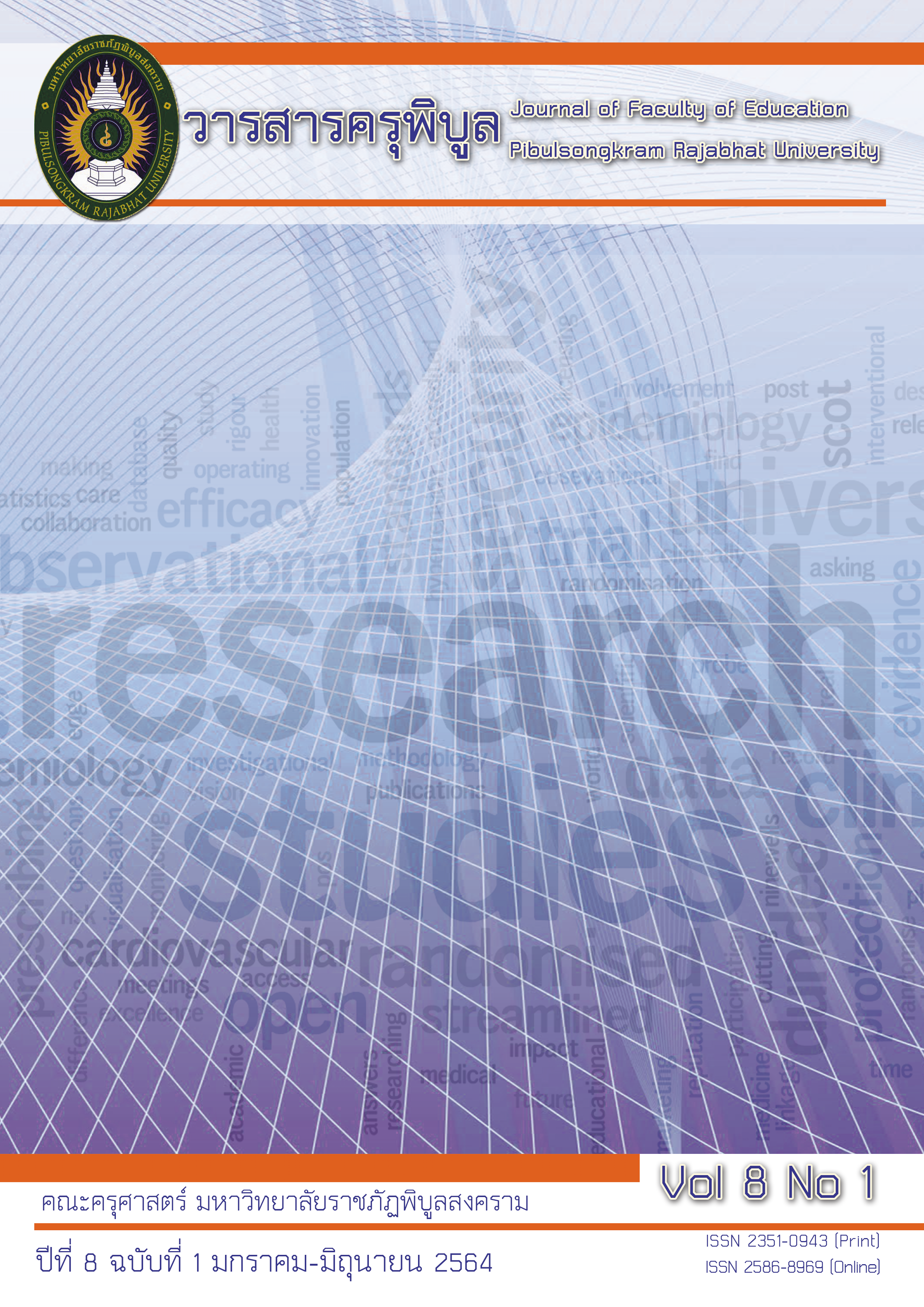Flipped Classroom Learning Management via Facebook and Thinking Tools for Analytical Thinking Enhancement of Mathyom 2 WatThaichumpol Municipality School
Keywords:
Flipped Classroom, Analysis thinking, Thinking tools learning, Flipped Classroom, Analysis thinking, Thinking tools learningAbstract
The purpose of this research was to compare the analytical thinking skills of classroom learning management upside down through Facebook with learning tools. Consisting of 4 groups as follows: 1) Flipped Classroom via Facebook with Learning Tools Thinking 2) Lecturer classroom with thinking tools learning 3) Facebook classroom group with lectures 4) Lecture classroom. The samples consisted of 160 students from 4 classrooms of Matayom 2 at Watthaichumpol municipality school, Muang district, Sukhothai province in the year 2018 which were selected by simple random drawing using the lucky draw method. The tools used for data collection consisted of Rubric and Analytical Thinking Test of 20 items. The data was analyzed by using percentage, arithmetic mean, standard deviation, t-test and the statistics. Present data analysis results using lecture tables.
The results of the study were as follows:
1) Test scores for analytical thinking skills in the classroom upside down via Facebook With learning tools Higher than the classroom group with lecture style and learning with thinking tools with statistically significance at .05 and comparing the evaluation scores of the work piece. Analytical thinking skills were not different.
2) The scores of the analytical thinking skills in the classroom were reversed via Facebook with learning tools that were higher than those in the Facebook group with the lectures with statistical significance .05
3) The scores of the analytical thinking skills in the classroom were reversed via Facebook with learning tools that were higher than the lecture group with statistical significance of .05
References
กรุงเทพฯ : กระทรวงศึกษาธิการ
กัญจน์ ผลภาษี. (2554). แนวทางการใช้สื่อสังคมออนไลน์ (Facebook) ในการเรียนการสอน. กรุงเทพฯ
คณะอุตสาหกรรมบริการวิทยาลัยดุสิตธานี.
ฉัตรแก้ว ศรีวงศ์. (2556). การพัฒนาปฏิบัติการเสมือนเพื่อ เสริมการเรียนรู้.
วิทยานิพนธ์ (สาขาวิชาเทคโนโลยีสารสนเทศ) มหาวิทยาลัยเทคโนโลยีสุรนารี.
ชาญณรงค์ วิเศษสัตย์. (2558). ผลการพัฒนาการจัดการเรียนรู้โดยใช้เครื่องมือคิดกับนักศึกษาชั้นปีที่ 3
มหาวิทยาลัยราชภัฏร้อยเอ็ดกรณีศึกษาในรายวิชาทักษะและเทคนิคการสอน. ร้อยเอ็ด : สถาบันวิจัย
และพัฒนา มหาวิทยาลัยราชภัฎร้อยเอ็ด.
ณัฐวรรธน์ สถิราวิวัฒน์และคณะ. (2561, มกราคม - มิถุนายน). แนวคิดการจัดการเรียนรู้แบบห้องเรียนกลับ
ด้านสำหรับวิชาพลศึกษา. วารสารศิลปศาสตร์ มหาวิทยาลัยแม่โจ้ 6(1) : 1-15
ณัฏฐิณี ศรสุวรรณ. (2558). ลักษณะของห้องเรียนในศตวรรษที่21. สืบค้น 31 ธันวาคม 2562 จาก
https://www.lri.co.th/knowledge_detail.php?knowledge_id=281.
ทำเพียร ชุมพล. (2557). ผลของการใช้การเรียนการสอนทักษะปฏิบัติเสริมด้วยเครื่องมือการคิดตาม
แนวคิดของเอ็ดเวิดเดอ โบโน ที่มีต่อความคิดสร้างสรรค์และความสามารถทางศิลปะ ของนักเรียนชั้น
ประถมศึกษาปีที่ 2. วิทยานิพนธ์ปริยญาครุศาสตรมหาบัณฑิต (สาขาวิชาหลักสูตรและการสอน) คณะ
ครุศาสตร์ มหาวิทยาลัยราชภัฏอุดรธานี.
พิชญะ กนัธิยะ.(2559).การพัฒนาทักษะการคิดวิเคราะห์โดยใช้การจัดการเรียนรู้แบบบันได 5 ขั้น
วิชาวิทยาศาสตร์ ของนักเรียนชั้นมัธยมศึกษาตอนต้น.วิทยานิพนธ์.หลักสูตรครุศาสตรมหาบัณฑิต
(สาขาวิชาหลักสูตรและการสอน). บัณฑิตวิทยาลัย มหาวิทยาลัยราชภัฏเชียงใหม่
แพง ชินพงศ์. (2558). คิดเป็น ทักษะที่จำเป็นในโลกปัจจุบัน. สืบค้น 6 ธันวาคม 2560
จาก: http://www.islammore.com/view/1647.



